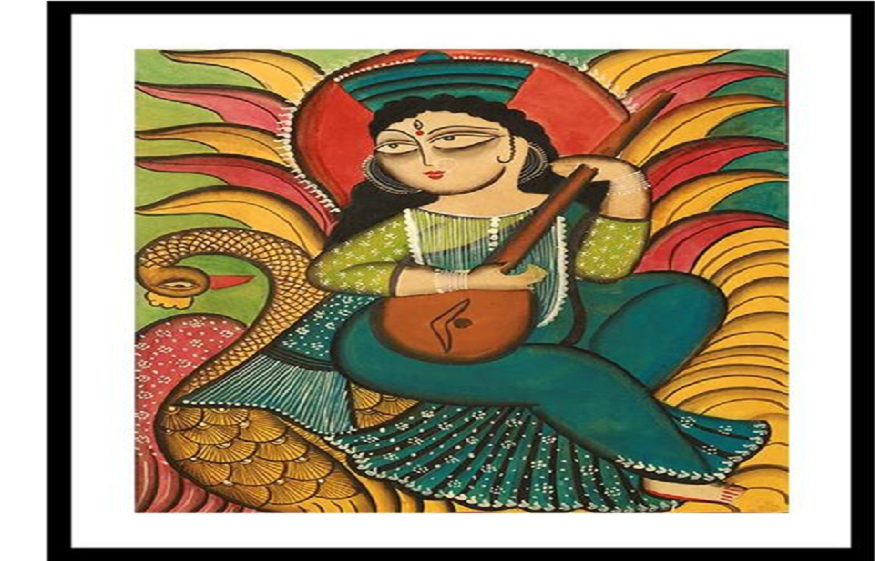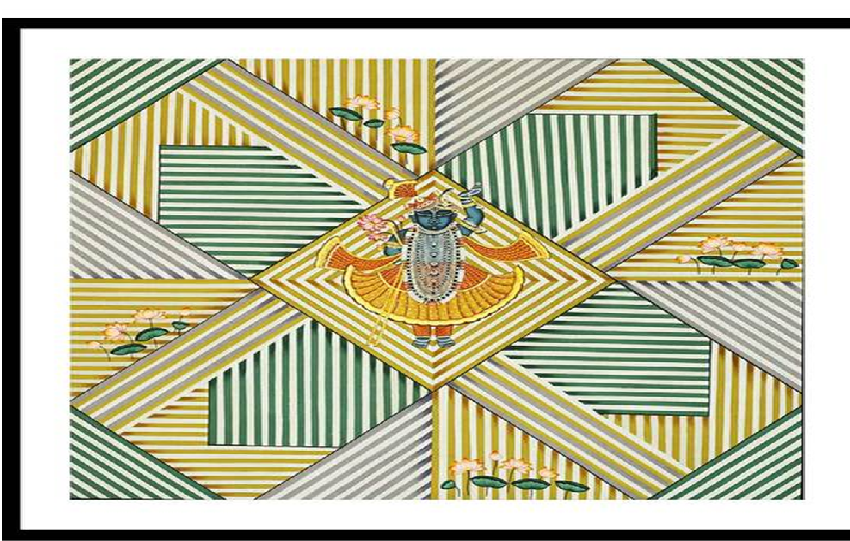
Adding art to your walls is an important decision. Each artwork that you choose is, in a way, a reflection of your personality and aesthetic. India has a rich artistic legacy, with a slew of folk art genres to its credit. Over the years, these have been popularized by media and word-of-mouth publicity, as the elaborate canvases were scaled down to be welcomed into our homes and offices.
Indian artworks have such diverse range that one can use them with flamboyance, as well as a minimalistic touch. Here is how you can add an antique flair to your home with these Indian Art forms:
Pichwai art

Though it originated in Rajasthan’s Nathdwara temple, the fame of Pichwai art has spread far and wide across the globe. In the 400 years since its origin, its beauty and elegance hasn’t diminished in the least, despite several reinterpretations of this art form. Pichwai style is traditionally dedicated to revering and adoring Shrinathji. The word ‘Pichwai’ comes from ‘pich’ (back) and ‘wai’ (textile wall hanging) because they were traditionally hung behind the deities in Nathdwara temple.
However, the modern Pichwai painting goes beyond this function by highlighting certain motifs and symbols from Lord Krishna’s life to create everlasting wonders of art. While Pichwai art may have originated in a temple, all paintings are not religious in nature due to the extensive use of common motifs like lotuses, peacocks, cows, etc. Sometimes, canvases of Pichwai art are embellished with golden threads or crystals for a more ornate and refined look. Such Pichwai paintings make for great wall art to deck up pooja rooms or even living rooms, adding an antique touch to the decor.
Rajasthani Art
Also known as the Rajput style of painting or Rajasthani classical painting, this art form flourished in the 17th and 18th century royal courts of Rajputana. The story behind the origin of Rajasthani art is quite interesting. Many artists trained in the art of Mughal miniature paintings were dismissed by Rajput courts in favour of more local artists. These artists were instrumental in shaping Rajasthani art the way we know today as they developed a unique style to depict tales from Hindu epics, royal activities, political scenarios and social values, in a grand and opulent way.
A Rajasthani classical painting is characterized by its lack of empty spaces. This creates an inextricable link between characters and landscapes, as both are given equal importance and space on the canvas. These paintings are mostly created with bright colours like yellow, red, blue, brown, white. However, it’s the sparse use of gold and silver colours gives Rajasthani art an antique look.
Kalighat Art
Having descended from Pattachitra art, a Kalighat painting was primarily created as souvenirs. British tourists and officials would take them back home as a reminder of India’s vibrant culture and artistic prowess. They were usually created on mill-made paper and portrayed Indian gods and goddesses from mythological folktales and religious epics. While Pattachitra art scrolls were often used to narrate mythological tales by Patuas (scroll painters), a Kalighat painting condensed these elaborate canvases into just one or two characters, instead of putting together an entire story.
There are two variants of Kalighat art, each with a minimalistic antique vibe, since the canvases aren’t too crowded. Oriental Kalighat Paintings generally included scenes from religious texts and Hindu tales. On the other hand, an Occidental Kalighat painting depicted contemporary themes like the freedom struggle, babu culture, etc.

